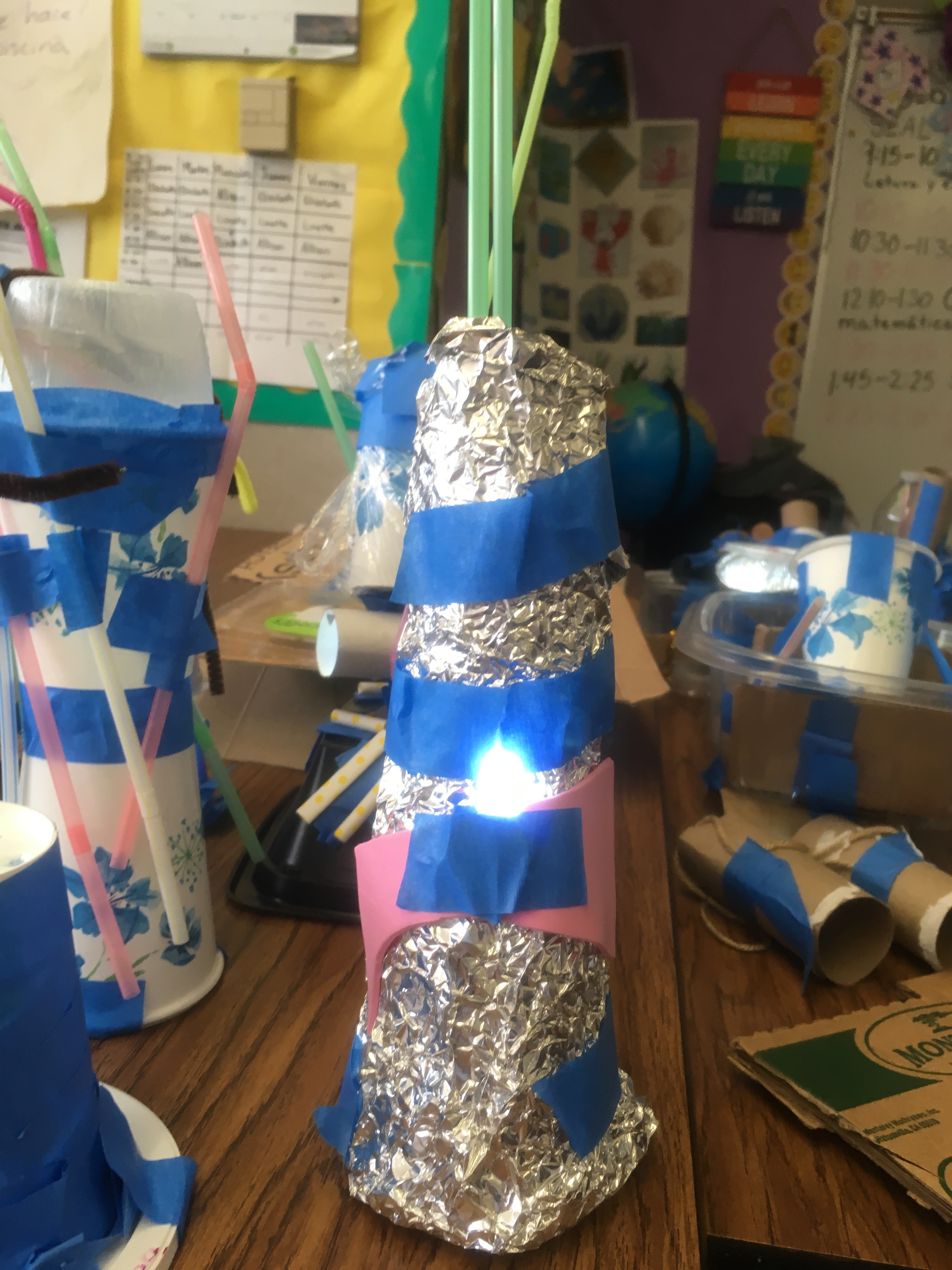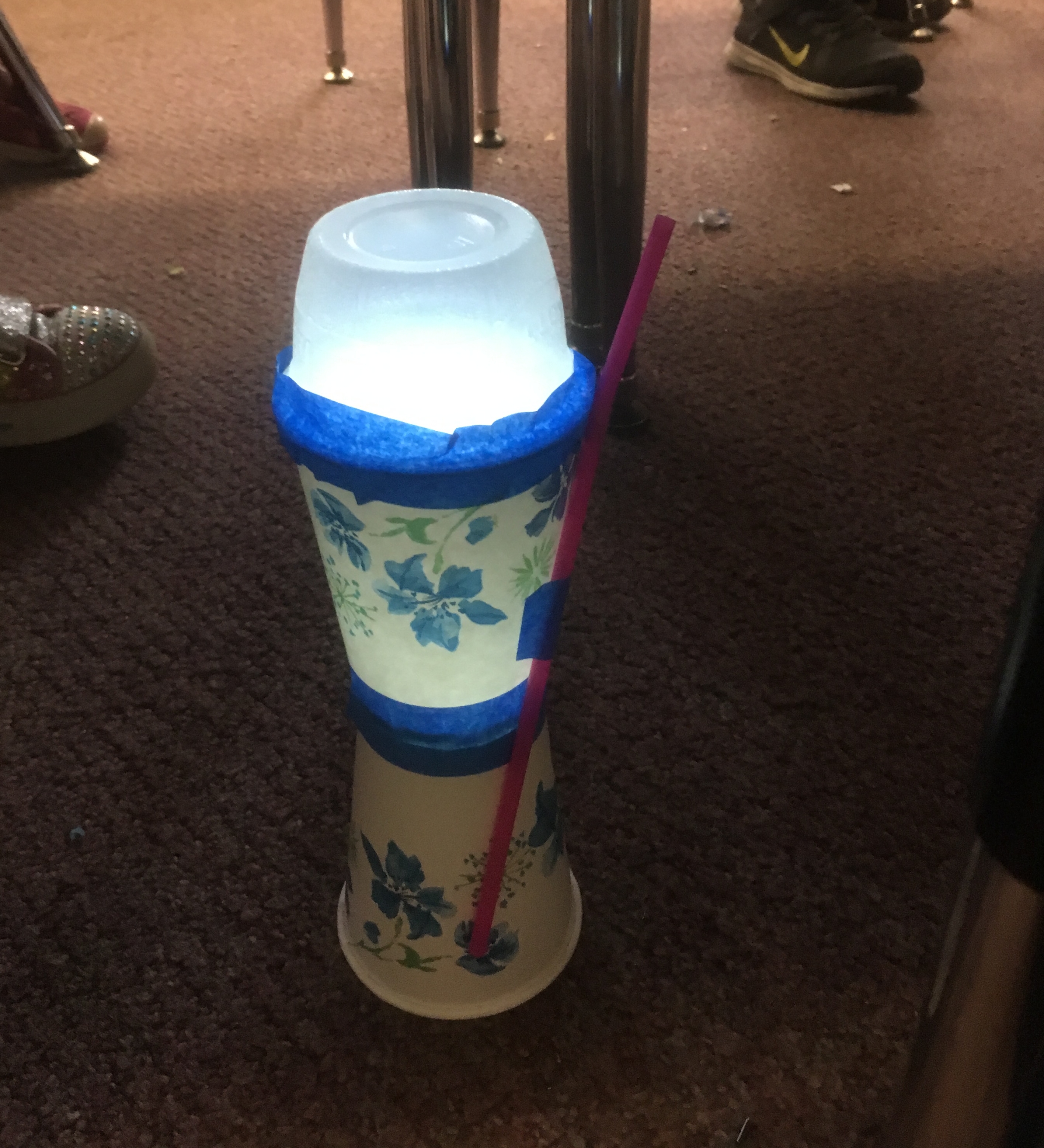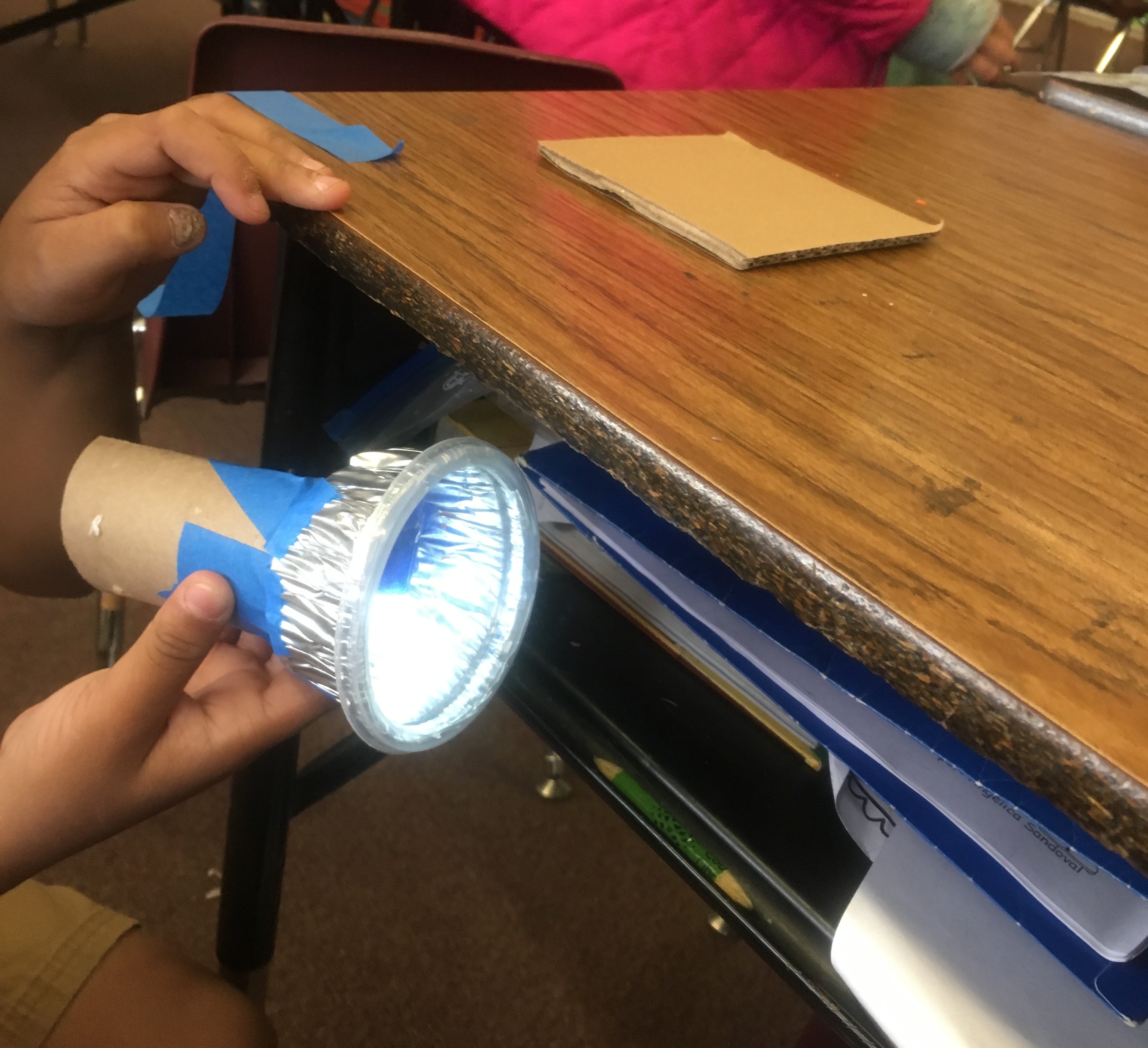Make an Object that Uses a Light (1st)
In this lesson, students use their understanding of LED lights from the LED Constellations Project to design and build an object that uses a light. The lesson is intended to be open-ended to allow students to express their creativity and problem solving skills. The activity can be assessed for student understanding of the ways that light interacts with different types of materials (specifically, transparent, translucent and opaque).
Materials: (include transparent, translucent and opaque)
- LED lights (10mm diffused white)
- Coin-cell batteries (3V)
- Recycled cardboard pieces and cereal boxes
- Toilet Paper Tubes
- Paper Cups
- Plastic Cups
- Tin Foil
- Clear Plastic Wrap
- Wax Paper
- Corks
- Pipe Cleaners (various colors)
- Straws
- Recycled Plastic
- cups, bottles, containers, etc.
- Low Temp. Hot Glue Guns and hot glue sticks
- Blue Masking Tape
- Binder Clips
Lesson Outline:
Step 1: Background Knowledge
Prior to the lesson, introduce students to academic language and examples of the following:
- Transparent – all light can pass through (clear plastic wrap, some types of plastic containers, clear plastic cups, window glass, etc.)
- Translucent – some light can pass through (wax paper, some plastic containers and lids, etc.)
- Opaque – no light passes through (construction paper, a wall, a solid door, a desk top, cardboard, etc.)
Reinforce the key terms by having students do a simple sorting activity. Each group needs:
- bright flashlight
- a box of recycled materials with transparent, translucent and opaque objects
- Students sort the materials into 3 piles.
- Teacher facilitates a discussion about why different objects are in each of the piles.
Step 2: Designing an Object that Uses a Light
- Bring students to the carpet.
- Remind students about the Constellations Project and LED lights.
- Say: “I’d like you to quietly think about an object that uses light.” (10 – 30 seconds)
- Say: “Please turn to a neighbor and share an idea of an object you could make that uses a light.” (30 seconds)
- Show students different materials they will be able to use to build an object.
- Say: “Return to your desk. I will invite you up as table groups to choose a few items to start building your object. You will have time to take more materials once you start building.” Invite table groups to gather materials (about 1-2 minutes each group).
- Once each student has collected materials and started building, pass out containers with enough LEDs and batteries for each student.
- Circulate to help cut cardboard and plastic as needed.
Step 3: Group Share
- Have students put their objects on the center of their desks.
- Invite groups to rotate in a gallery walk, one table at a time.
- Ask them to talk about what they notice and what they think each object represents.
Step 4: Writing
- Have students write brief explanations of their objects
- Have them include a drawing or picture, with labels for different materials.
- Ask students to use the key vocabulary terms from Background Knowledge section.
NGSS Connections
Performance Expectation. 1-PS4-3. Plan and conduct investigations to determine the effect of placing objects made with different materials in the path of a beam of light.
Clarification Statement: Examples of materials could include those that are transparent (such as clear plastic), translucent (such as wax paper), opaque (such as cardboard), and reflective (such as a mirror).]
Assessment Boundary: Assessment does not include the speed of light.
Disciplinary Core Ideas. PS4.B: Electromagnetic Radiation
- Some materials allow light to pass through them, others allow only some light through and others block all the light and create a dark shadow on any surface beyond them, where the light cannot reach. Mirrors can be used to redirect a light beam. (Boundary: The idea that light travels from place to place is developed through experiences with light sources, mirrors, and shadows, but no attempt is made to discuss the speed of light.)
Crosscutting Concepts: Cause and Effect. Simple tests can be designed to gather evidence to support or refute student ideas about causes.




